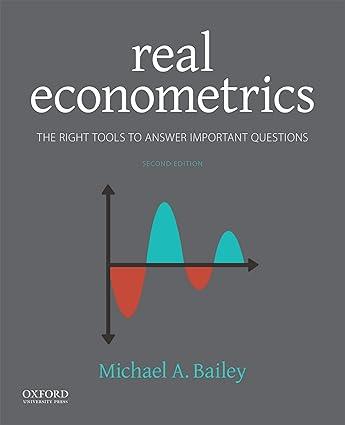In an effort to better understand the effects of get-out-the-vote messages on voter turnout, Gerber and Green
Question:
In an effort to better understand the effects of get-out-the-vote messages on voter turnout, Gerber and Green (2005) conducted a randomized field experiment involving approximately 30,000 individuals in New Haven, Connecticut, in 1998. One of the experimental treatments was randomly assigned in-person visits where a volunteer visited the person's home and encouraged him or her to vote. The file GerberGreenData.dta contains the variables described in Table 10.10.
(a) Estimate a bivariate model of the effect of actual contact on voting. Is the model biased? Why or why not?
(b) Estimate compliance by estimating what percent of treatment-assigned people actually were contacted.
(c) Use ITT to estimate the effect of being assigned treatment on whether someone turned out to vote. Is this estimate likely to be higher or lower than the actual effect of being contacted? Is it subject to endogeneity?
(d) Use 2SLS to estimate the effect of contact on voting. Compare the results to the ITT results. Justify your choice of instrument.
(e) We can use ITT results and compliance rates to generate a Wald estimator, which is an estimate of the treatment effects calculated by dividing the ITT effect by the coefficient on the treatment assignment variable in the first-stage model of the 2SLS model. (If no one in the non-treatment-assignment group gets the treatment, this coefficient will indicate the compliance rate; more generally, this coefficient indicates the net effect of treatment assignment on probability of treatment observed.) Calculate this quantity by using the results in part
(b) and (c), and compare to the 2SLS results. It helps to be as precise as possible. Are they different? Discuss.
(f) Create dummy variables indicating whether respondents lived in Ward 2 and Ward 3. Assess balance for Wards 2 and 3 and also for the people-per-household variables. Is imbalance a problem? Why or why not? Is there anything we should do about it?
(g) Estimate a 2SLS model including controls for Ward 2 and Ward 3 residence and the number of people in the household. Do you expect the results to differ substantially? Why or why not? Explain how the first-stage results differ from the balance tests described earlier.

Step by Step Answer:

Real Econometrics The Right Tools To Answer Important Questions
ISBN: 9780190857462
2nd Edition
Authors: Michael Bailey





